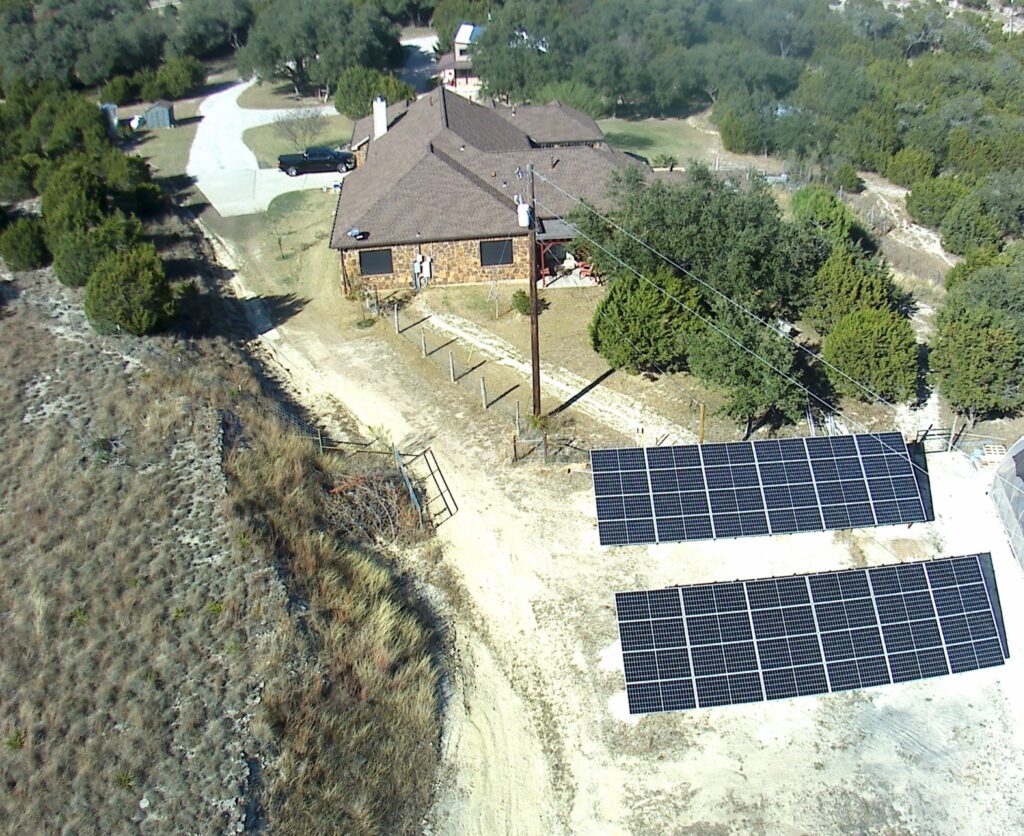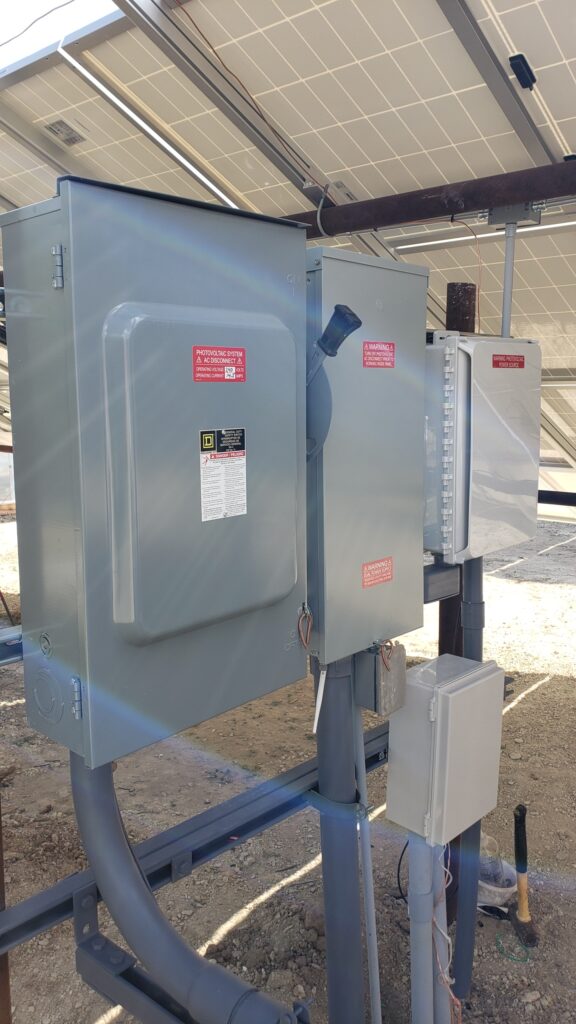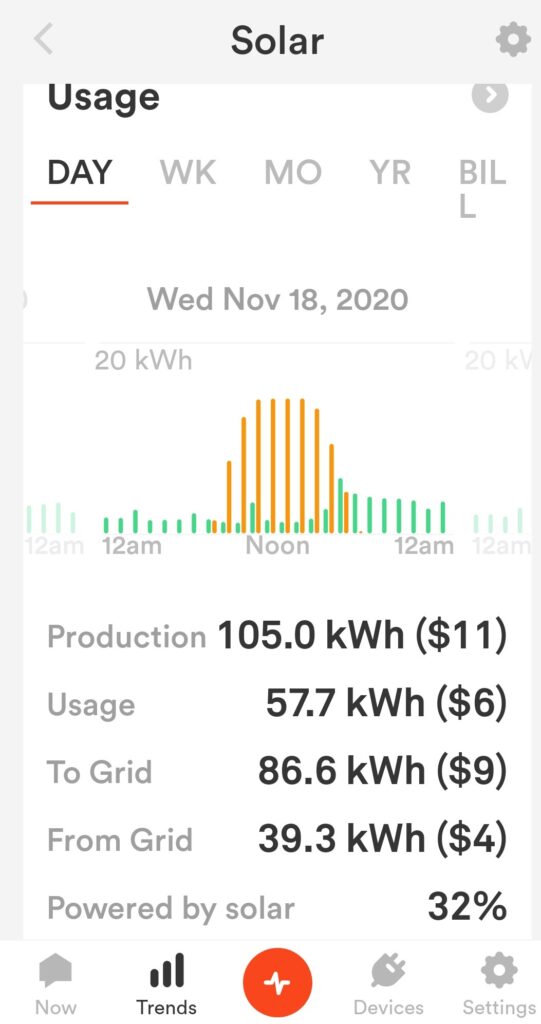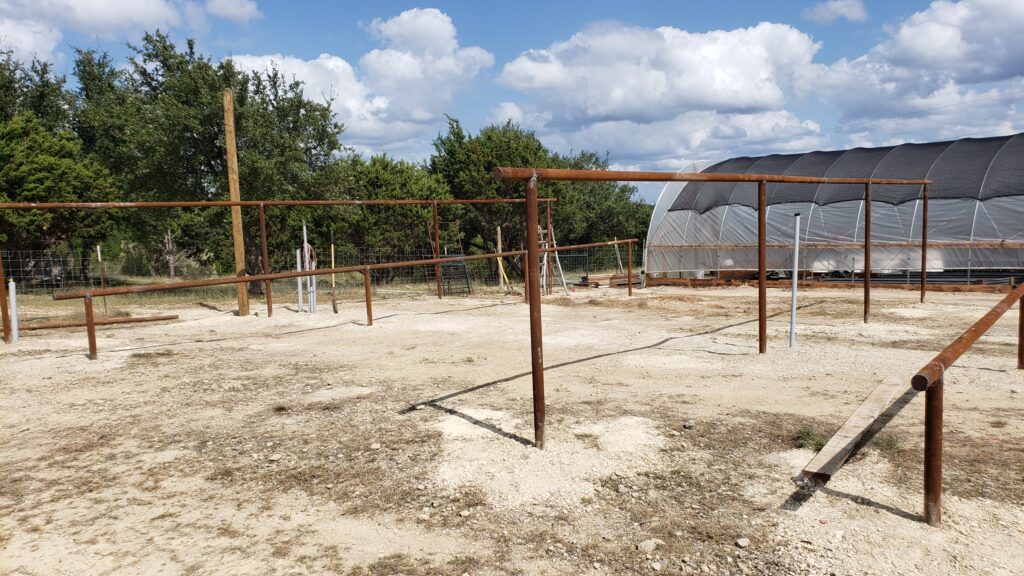Mar 17, 2021 | News

Jason Pittman
PresidentGoSmartSolar
How often do you wander into your boss’s office to resign and he ends up offering you something you really want to do? In Jason Pitman’s case, it was leading the clean energy and sustainability business line for a global consulting firm. Jason’s 18 years of clean energy experience ranges from large utility-scale systems and distributed residential and commercial systems to the development and execution of utility integrated solar programs. In 2016, Jason co-founded Go Smart Solar as a way to develop innovative business models that would lower the cost of solar because, as he says, ‘…the benefits of solar energy should be available to everyone.’
We caught up with Jason recently to talk about – what else – solar writ large and community solar specifically. Here’s our conversation.
TXSES: From environmental engineering in school to Go Smart Solar, it seems like you were destined to be an innovative presence in the solar space.
JP: I was fortunate to have the opportunity to focus on clean tech and sustainability for more than a decade while at URS Corporation. I was, and still am, driven by an environmental ethic. While at URS, I built a B2B focused business line around solar and sustainability. After URS, I spent three years at a small solar developer developing utility integrated solar programs. I really wanted to make a difference, to help more people directly benefit from solar by lowering their energy burden and cutting personal emissions, and that meant distributed generation. Both of these experiences helped me understand the importance of leadership and recognized opportunities to leverage innovation to solve energy market challenges like access to capital and credit, value stacking, utility models, homeownership requirements, and equity issues in the community. Once I met my co-founder, Robert Miggins, building an innovation-driven energy company to solve these challenges was the obvious next step.
TXSES: That’s a different, distinct set of hurdles. How did you switch?
JP: There are barriers to going solar, like up-front costs, owning a home, having a viable roof. What motivated me to pivot from utility-scale to community-scale solar and partnering with utilities through innovative business models. At Go Smart Solar, we veered from solar’s environmental benefit to community solar’s more equity-centric mindset: solar should and could be available to everyone regardless of their economic status.
TXSES: Solar is such a democratic resource. The sun shines everywhere. But how do you help utilities overcome their solar fears? Utilities make money when they generate power. If more people put solar on their roofs, utilities might perceive this as a threat to their bottom line and make it difficult for folks to go solar with unnecessary fees and punitive policies. This isn’t a new tactic.
JP: Go Smart Solar isn’t in the business of trying to put utilities out of business. In fact, we want to help them deploy as much solar as they possibly can. We made a decision early on that if we were going to achieve our goal of more solar for more people, we need to partner with utilities not work against them. We’ve found that if you have an idea that checks all the boxes and makes sense, utilities will consider it.
TXSES: And speaking of utility partnerships, talk about Big Sun Community Solar, Go Smart Solar’s partnership with City Public Service Energy (CPS).
JP: In late 2018, we were awarded a CPS Energy contract to build, operate and maintain 5MWac of community solar. This 5MW was broken up into 12 different facilities…solar carports, to be exact, all around the San Antonio community. We think covering large parking lots makes sense (think heat islands). And who doesn’t want covered parking in Central Texas – solar PV covered parking at that! We launched the program, started building the generating assets and began selling to customers. And then COVID hit.
TXSES: Ouch. How did that affect the roll-out?
JP: It definitely had an effect, but despite the pandemic, we pushed. Robert and I made a decision early on, we wouldn’t furlough or lay off any of our staff due to the pandemic. Instead, we focused on creating positive user experience by investing more resources in our solar technology platform Core99. Core99 is our utility and customer facing software platform which drives all our community solar programs. Then we focused on the customer through customer service and the UI/UX- we helped customers figure out the right number of panels that’s best for them. Customers could buy as little as one panel or enough to offset 100 percent of their load. The average offset is about 80 percent. What’s so great about this project is that it doesn’t matter where in CPS service territory you live. The credit will follow you wherever you move. We also offered a down payment assistance and financing program for low-income customers.
TXSES: Are there any spots left?
JP: We sold all 5MW! CPS Energy started its community solar program back in 2016 with a very successful 1MW pilot program which prompted the 5MW project.
TXSES: That’s great. Given the recent Texas grid blackout, it’s not hard to assume distributed solar is a smart idea. Have you seen an uptick in business?
JP: Distributed solar is beneficial anytime you generate energy. Next to the point of consumption, generation adds operational value to the grid. There’s no congestion risk, plus we can target stressed areas of the grid. During the blackout, we learned that some of our systems were connected to critical circuits which meant they continued to produce power during the rolling outages. In the future, we’d like to be able to connect our assets to critical circuits which would provide more value and certainty to the grid. Plus, these community-scale projects are highly visible in the community.
TXSES: What’s one of Go Smart Solar’s biggest challenges?
JP: Perhaps one of the biggest challenges is how to address bad actors in the solar industry: those who don’t give consumers the facts and distort the truth; they install panels on shaded roofs and assure consumers electric bills will be zero. That’s who we’re in competition with. Ultimately, it’s up to consumers to be well-informed before they buy anything; caveat emptor. But solar rooftop systems are complicated. Consumers don’t think about kilowatt hours or annual maintenance. If you put solar on your roof and the solar installer says it’ll produce x/kWh/month and your local utility gives you a rebate, who’s tracking production? What about consumer protection around long-term performance? Unfortunately, there’s no code of ethics. We at Go Smart Solar look at the consumer experience with an eye toward advocacy.
TXSES: Have you heard about SB 398 (Sen Menéndez), the Solar Consumer Protection Act? Among other things, it includes mandatory minimum disclosures for purchasing, leasing and purchasing power agreements. We’ll be keeping an eye on this one. What’s surprised you the most about this work?
JP: Deploying Big Sun Community Solar. There are so many people who really want to do something to help protect the environment and fight climate change. They know the very least thing they can do is recycle because that doesn’t cost anything. They feel like they couldn’t adopt solar because it’s expensive. But through these community solar projects, more people are able to go solar because we’re using innovation to eliminate barriers. It continues to be so rewarding to be part of this work.
TXSES: It’s our great good fortune you’re part of the Texas solar community, Jason. Thanks so much for sharing your work with us.
Dec 15, 2020 | News
When Michael Blank was nine, his dad, an electrical engineer, taught him basic wiring. At 13, Blank was doing more complicated electrical tasks than dad was comfortable supervising. Spoiler alert: solar PV and Michael Blank have a future together.
When IBM released its first personal computer in 1986, Blank and fellow students at Video Technical Institute at Long Beach disassembled it and put it back together. Thus began his career in network engineering. So it’s no surprise that when he turned to home renovations, going green and going solar were a given.
We caught up with Michael recently to learn more about his sustainable home in Dripping Springs, including a 20kW ground mount solar PV system with battery backup. Here’s our conversation.
TXSES: Given your early DIY tendencies toward things electrical and mechanical, it’s little wonder that solar PV and you were destined to meet. When did it end up on your to-do list?
MB: Solar and green renovations were always a hobby. In 2009, I installed our first PV system, a 6kW system with Xantrex inverter on our custom home in Fort Worth. It was an expensive system; those $900 Kyocera panels cost $40K. We saw some savings, but it wasn’t until we moved to our current home in Dripping Springs that we really got to go big with PV.

TXSES: Tell us more.
MB: When we moved from Fort Worth to Dripping Springs in 2017, we decided to take our $40,000, 6kW PV system with us. I installed it on the roof of my office/shop.
TXSES: And is it still generating sufficient power?
MB: Surprisingly yes! Despite its age, that system is still producing like a workhorse. I was expecting 10%-20% loss but it hit its full 6K power, zeroing out my bill for the shop!
The next project, our home in Dripping Springs, is 3,500sf with a pool and two AC units. Pre-PV, our bills were running $150-$200 in winter and $450 in summer.
TXSES: And now with your new, larger PV system?
MB: We started designing a 20-25kW rooftop system with battery backup. I contacted four Austin installers whose prices ranged from $50-70K for just the PV; batteries added another $15-20K. And yes, there is a 26% federal tax credit but the more I thought about it, the more I decided that I would do it myself but not as a rooftop installation. We’ve got six acres of land –just perfect for a 26-degree ground-mount PV system.
TXSES: So all you needed was a welder and some pipe.
MB: That and the system. I met with a local welder and found technical specs for a racking system from Iron Ridge. Panels and system came from altE Energy Store in Massachussets. The ground mount system, which we call Phase 1, was commissioned November 20th. It went up quick! I call it Texas meets Technology.
TXSES: Catchy!
MB: We repurposed old 3” drill pipe from Odessa. Once the mounts are built, you can install one rack in a day. Grid connection to Pedernales Electric Coop (PEC) was very easy. They came out a week after I applied for certification and passed it.

Our new system is a 20kW ground mount Q Cells 420W panels (Q peak duo L-G8.2) with 14.4 kW usable from the microinverters, Enphase IQ7+. 7kW is grid-tied directly and the other 7kW connects to an Outback Radian GS8048 grid-tied inverter with two 6kW KiloVault HAB 7. I’ll build a small protected shed that will be insulated and temperature controlled for the batteries and inverter in Phase 2.
Although the panels are 420W, the inverters only produce only 300W each, but given the size of the system, we’re still gathering more light and collecting more energy quicker because of the size of the panels.
TXSES: What’s the system producing now? Was it less expensive than $70K+?

MB: It’s producing 105kW/day on a good day which will zero out our winter bills. Our $450 electric bill should be $100. And yes, much less expensive than $70K. The PV system with racking was about $26K; battery system $12K; steel for ground mount $2K, totaling about $40K. I was originally pushing for 25kW system to completely zero out my electric bill but all of the solar installers I spoke with recommend sizing a system to 80%. My November/December solar production was 2,164kWh and actual usage for the home was 1,924kWh, a net of 240kWh. I’ll know at the end of the year how we’re actually doing.
TXSES: Are you net metering?
MB: Yes. We’re on the standard fixed residential rate of $08.9c/kW. Any excess power that we generate goes back to PEC’s grid. Whatever I consume at night comes back as a 1:1 credit. As long as I use it before the end of the billing period, it’s a 1:1 credit. If any excess rolls over to the next month, they cut that credit in half.
TXSES: You must be pleased. How did you decide on the battery system?
MB: The panels were the easy part of the project. The batteries were more challenging.

TXSES: How so?
MB: It really came down to what system I wanted. I looked at Tesla and LG Chem; each had its own set of issues. We ultimately went with KiloVault HAB 7.5. Because it will be a battery-backed home, 7kW of the PV array will feed into the inverter to keep the batteries charged. If the grid goes down, the Outback inverter will generate the correct frequency to turn the microinverters on, making us a microgrid and completely islanded.
TXSES: What surprised you the most about this project?
MB: That it comes together a lot quicker if you plan it! If you’re going to do it, do it right.
TXSES: And you’ve certainly done that, Michael. Thanks for sharing your story with us. OK if we circle back with you next summer for an update?
MB: Absolutely! Thanks for the opportunity to share our story.
Dec 15, 2020 | News
by Jane Pulaski
In this nothing-is-normal simmering cauldron we’re currently living in, I am nonetheless thinking about the upcoming Texas legislative session. Perhaps it’s a distraction from relentless pandemic obsessing, but as a former house and senate committee clerk, every new session still arouses my penchant for the legislative process. While every session is unique, this one comes with a wallop: the pandemic and low oil prices have decimated state coffers.

Image: Texas State Preservation Board
According to State Comptroller Glen Hegar, general revenue for the current two-year budget is some $11.5 billion less than the $121.8 billion estimated last fall resulting in a $4.6 billion deficit when the current biennium ends August 2021. That’s painful, especially when pre-COVID, Hegar predicted almost a $3 billion surplus.
Given the state’s gloomy economic position, I reached out to Charlie Hemmeline, Executive Director Texas Solar Power Association, for his thoughts about how solar might fare during the 87th Regular Session starting in a month.
“Texas has an enviable market structure for solar,” he said. “We’ve got lots of land, sun, population, and we consume the most energy.”
He’s right.
Texas is the largest energy-producing AND energy consuming state in the nation. Our industrial sector, including refineries and petrochemical plants, accounts for half of the energy consumed in the state. Despite our inherent tendency to brag, somehow that statistic doesn’t feel brag-worthy.
Before COVID, Texas’s solar outlook was embarrassingly brilliant. “We were projecting 2020 would be the biggest solar year ever, and it has been,” said Hemmeline. “We’ve more than doubled total installed capacity this year, more than doubled our footprint in utility and distributed scale installations. We’re adding gigawatts; that’s the metric now.”
Even though solar was considered an essential business because of grid reliability and security, the pandemic definitely impacted the industry. “Like other industries, solar had to figure out how to conduct business; what could companies do to keep employees and consumers safe. But the industry was able to modify its business model. Sales and business activities shifted to online platforms. Construction, whether on a roof or a large construction site, was outdoors and distanced. Frankly, solar was more fortunate than most industries.”
 The Solar Foundation’s National Solar Jobs Census details the size and scope of the U.S. solar workforce. The 2019 numbers were breathtaking: nearly a quarter-million made up the solar workforce. Over the past decade, U.S. solar jobs increased 167% adding almost 200,000 jobs. Between 2014 and 2019, solar employment increased 44%, five times faster than job growth in the overall U.S. economy. In 2019, Texas’s solar full and part-time workforce was more than 14,000 putting us in the top five.
The Solar Foundation’s National Solar Jobs Census details the size and scope of the U.S. solar workforce. The 2019 numbers were breathtaking: nearly a quarter-million made up the solar workforce. Over the past decade, U.S. solar jobs increased 167% adding almost 200,000 jobs. Between 2014 and 2019, solar employment increased 44%, five times faster than job growth in the overall U.S. economy. In 2019, Texas’s solar full and part-time workforce was more than 14,000 putting us in the top five.
Still, the Texas solar industry has felt the effects of the pandemic.
In Texas, nearly 23,000 clean energy jobs have been lost, about 9.2% of the clean energy workforce.
As bad as the losses of clean energy jobs in Texas, its oil and gas workforce has felt the effects of COVID even more. While the industry was in contraction mode before the pandemic and some jobs were added back in September, 70,000 oil and gas jobs have been lost in Texas since late 2018.
Chevron Corp. is planning a 10% to 15% reduction in its global workforce this year, the biggest recent cut to headcount yet among global oil majors. It comes after oil-services giants Halliburton Co. and Schlumberger Ltd. have already made steep jobs cuts, including in Texas.
That said, former fossil-fuel employees with transferable skills like project managers, engineers, construction specialists, are increasingly finding work in clean energy. Project managers, engineers and construction specialists are specific examples of transferable skills.
Despite the historic downturn, wind and solar production are still on a steep trajectory for explosive growth in Texas. The Electric Reliability Council of Texas (ERCOT) predicts a 150% increase in utility-scale solar to 570MW this year. Next year, it’s predicted to grow 130% to 14,00MW. On the wind side, Texas ranked #1 nationally in 2019 for installed wind capacity with 30+GW on the ground and another 5GW capacity under construction.

Photo by Sean O’Kane / The Verge
We’re carving out a leading position in large scale battery storage. Tesla’s Electric Cybertruck and Model Y SUV plant is moving to Del Valle, making it the company’s largest auto assembly plant. Musk himself is moving to the Lone Star State. Greentown Labs, North America’s largest climate-tech incubator, will open its second location in Houston in Spring 2021. By the end of last year, private companies had invested more than $53 billion dollars in solar and wind energy, producing enough clean electricity to power over 7.7 million homes.
Given these enviable facts, is there reason for optimism or concern for solar in the upcoming legislative session?
“Word from leadership is because there will be less bandwidth to deal with the flood of legislation because of the pandemic, there will be fewer bills filed,” said Hemmeline. “Legislation on the most important issues, like ways to recoup billions in tax shortfalls, will eat up a lot of oxygen. For solar, the tenor of the conversations won’t be drastically different than last session: solar is growing tremendously, it has statewide benefits and enjoys broad support. It’s in a good place to keep growing.”
The benefits of solar are truly statewide. “Not everyone can live on the Texas coast and reap the benefits of the wind resource, but everybody gets solar, either on their roof or from big box retail roofs or land tracts. It’s the best neighbor: it’s silent, doesn’t need oceans of water, doesn’t generate traffic. It’s the reason we love solar: it’s unabashedly good.”
Recently, TXSES formed a policy committee to address immediate solar issues. “This group brings a broad range of perspectives from utility-scale renewables to distributed generation to energy efficiency and new smart grid technology,” said Patrice ‘Pete’ Parsons, TXSES Executive Director. “We’re prepared to keep up with what happens with solar this session.”
Session runs from January 12-May 31, 2021. Stay tuned for updates.
Jane Pulaski, former communications specialist for the Interstate Renewable Energy Council and former TXSES board member, is currently helping TXSES amplify its message and increase its visibility via traditional and digital media.








